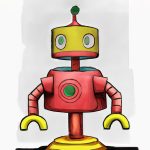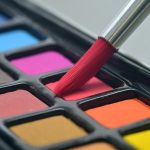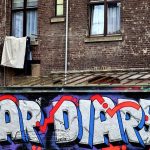# AI Art: Exploring the Boundless Possibilities of Machine Learning in Visual Expression
The intersection of technology and creativity has long fascinated artists, scientists, and technologists alike. In recent years, artificial intelligence (AI) has emerged as a groundbreaking force in the realm of visual expression, reshaping how art is created, perceived, and appreciated. As machine learning algorithms evolve, they open new avenues for artistic exploration, challenging traditional notions of creativity and authorship. This article delves into the multifaceted world of AI art, examining its techniques, implications, and the future it promises.
## Understanding the Techniques Behind AI Art
Machine learning, particularly deep learning, forms the backbone of AI art generation. By utilizing neural networks, AI systems can analyze vast datasets of existing artwork, identifying patterns, styles, and techniques that inform their output. Generative Adversarial Networks (GANs) represent a significant advancement in this field, where two neural networks—the generator and the discriminator—engage in a creative duel. The generator produces images based on learned data, while the discriminator evaluates these images against real artworks, providing feedback that drives improvement.
Another fascinating approach involves style transfer, which allows an AI to take the stylistic elements of one image and apply them to another. This technique has gained popularity for its ability to transform photographs into paintings reminiscent of famous artists like Van Gogh or Picasso. By leveraging these technologies, artists can create unique pieces that blend human creativity with machine learning, resulting in an innovative fusion of traditional and contemporary art forms.
Beyond GANs and style transfer, other methods such as reinforcement learning and variational autoencoders (VAEs) contribute to the diversity of AI-generated art. Each technique offers distinct advantages, enabling artists to experiment with various styles and concepts. As a result, the creative possibilities seem virtually limitless, inviting artists to push the boundaries of their imagination.
## The Role of AI in the Artistic Process
While some may argue that AI-generated art lacks the emotional depth associated with human-created works, it is essential to consider the role of AI as a collaborative tool rather than a replacement for human artists. Many contemporary creators are embracing AI as a partner in their artistic endeavors, using algorithms to inspire new ideas, refine techniques, and even challenge their own creative instincts. This symbiotic relationship redefines the creative process, allowing artists to explore uncharted territories.
Collaboration between humans and machines often leads to unexpected outcomes. For instance, artists may input specific parameters or themes into an AI model, allowing the machine to generate a range of outputs that the artist can then curate or modify. This iterative process not only enhances creativity but also encourages a dialogue between human intention and machine interpretation. As a result, the final artwork becomes a testament to the fusion of human emotion and machine precision.
Moreover, the democratization of art creation through AI tools has opened doors for individuals who may lack traditional artistic training. With user-friendly applications, anyone can experiment with AI-generated art, fostering a new generation of creators. This accessibility challenges the elitism often associated with the art world, inviting diverse voices and perspectives that enrich the cultural landscape.
## Ethical Considerations and Future Directions
As the capabilities of AI art continue to expand, ethical considerations come to the forefront. Questions surrounding authorship, originality, and the potential for misuse of AI-generated content are becoming increasingly pertinent. Who owns an artwork created by an AI? Can a machine truly be considered an artist? These inquiries provoke deep philosophical discussions about the nature of creativity and the role of technology in our lives.
Furthermore, issues of bias in AI training datasets pose significant challenges. If an AI is trained predominantly on a narrow range of artistic styles or cultural representations, it may inadvertently perpetuate stereotypes or exclude marginalized voices. Addressing these biases is crucial to ensuring that AI art reflects a diverse and inclusive spectrum of human experience. Researchers and artists are actively working to create more equitable datasets and algorithms that celebrate the richness of global artistic traditions.
Looking ahead, the future of AI art holds immense potential. As technology continues to evolve, we can expect even more sophisticated tools that further blur the lines between human and machine creativity. The advent of augmented reality (AR) and virtual reality (VR) may provide new platforms for AI-generated art, allowing audiences to engage with artworks in immersive environments. Additionally, the integration of AI into art education could revolutionize how aspiring artists learn and develop their skills, fostering a new era of creativity.
In conclusion, AI art represents a thrilling frontier in visual expression, characterized by innovative techniques, collaborative processes, and complex ethical considerations. As artists and technologists navigate this evolving landscape, the dialogue between human creativity and machine learning will undoubtedly continue to inspire new forms of artistic expression. By embracing the boundless possibilities of AI, we can look forward to a future where art transcends traditional boundaries, inviting us to explore the depths of our imagination and the capabilities of technology.











